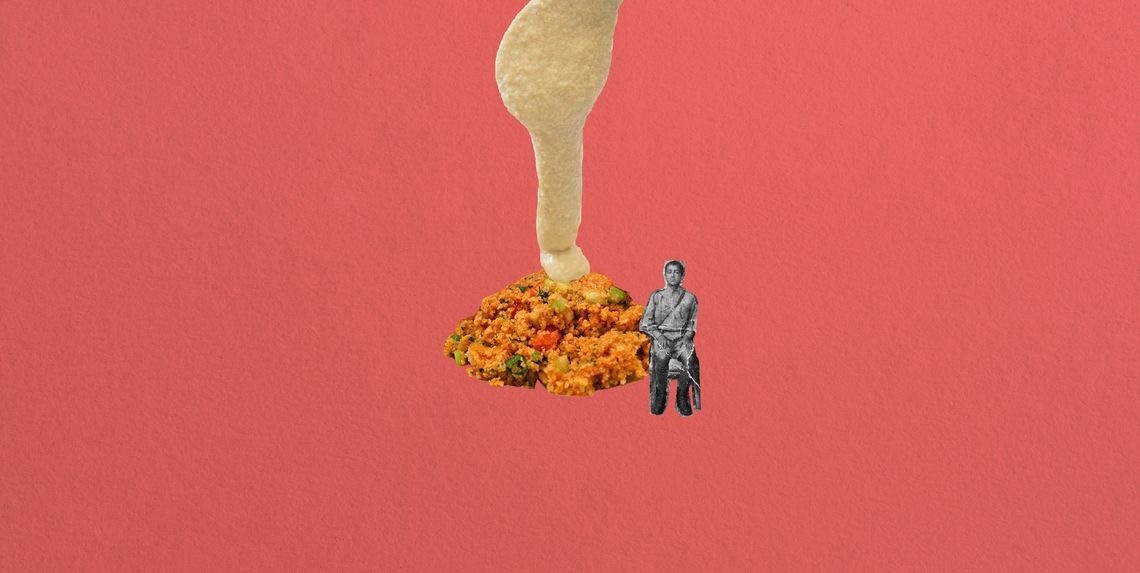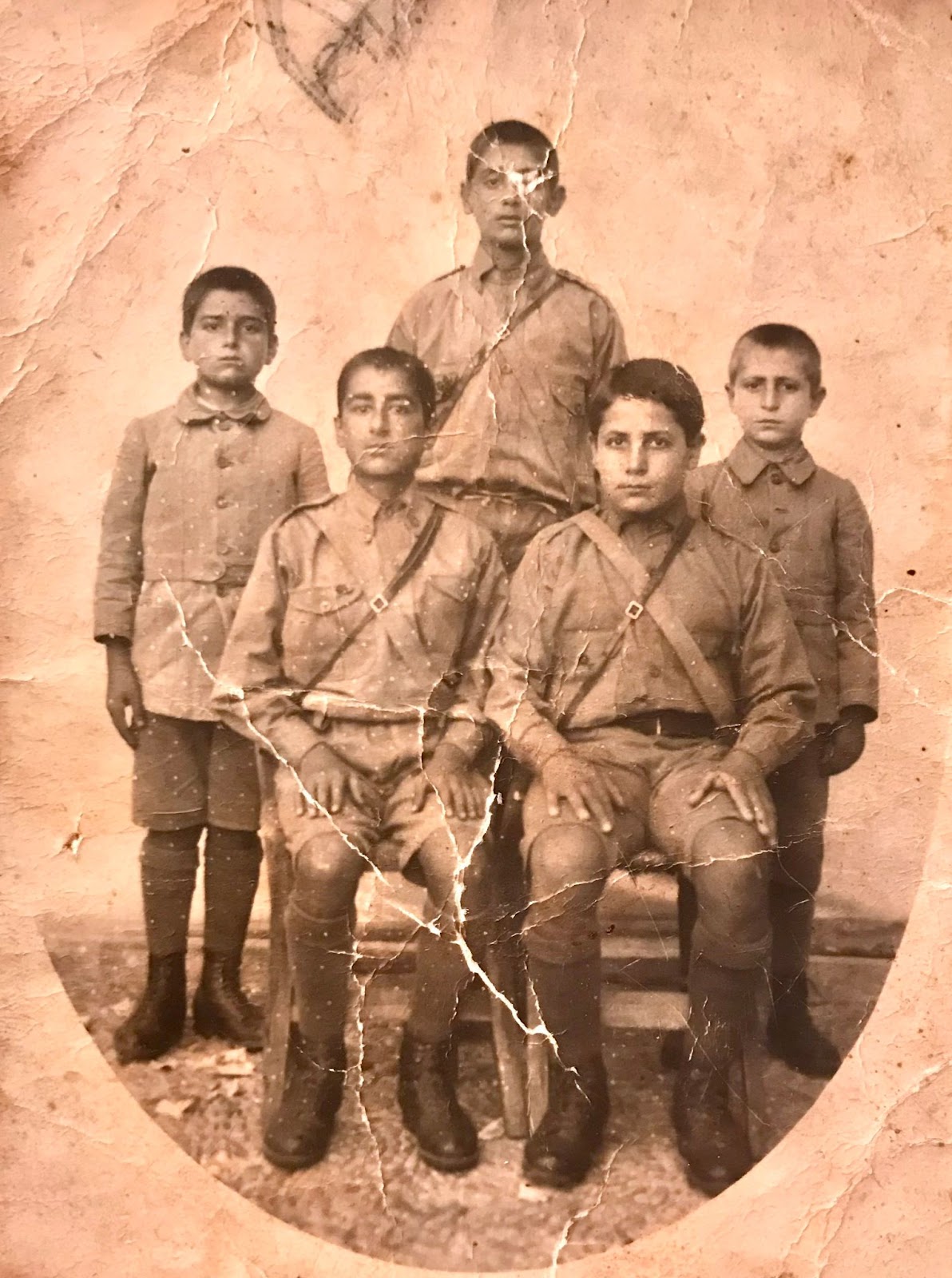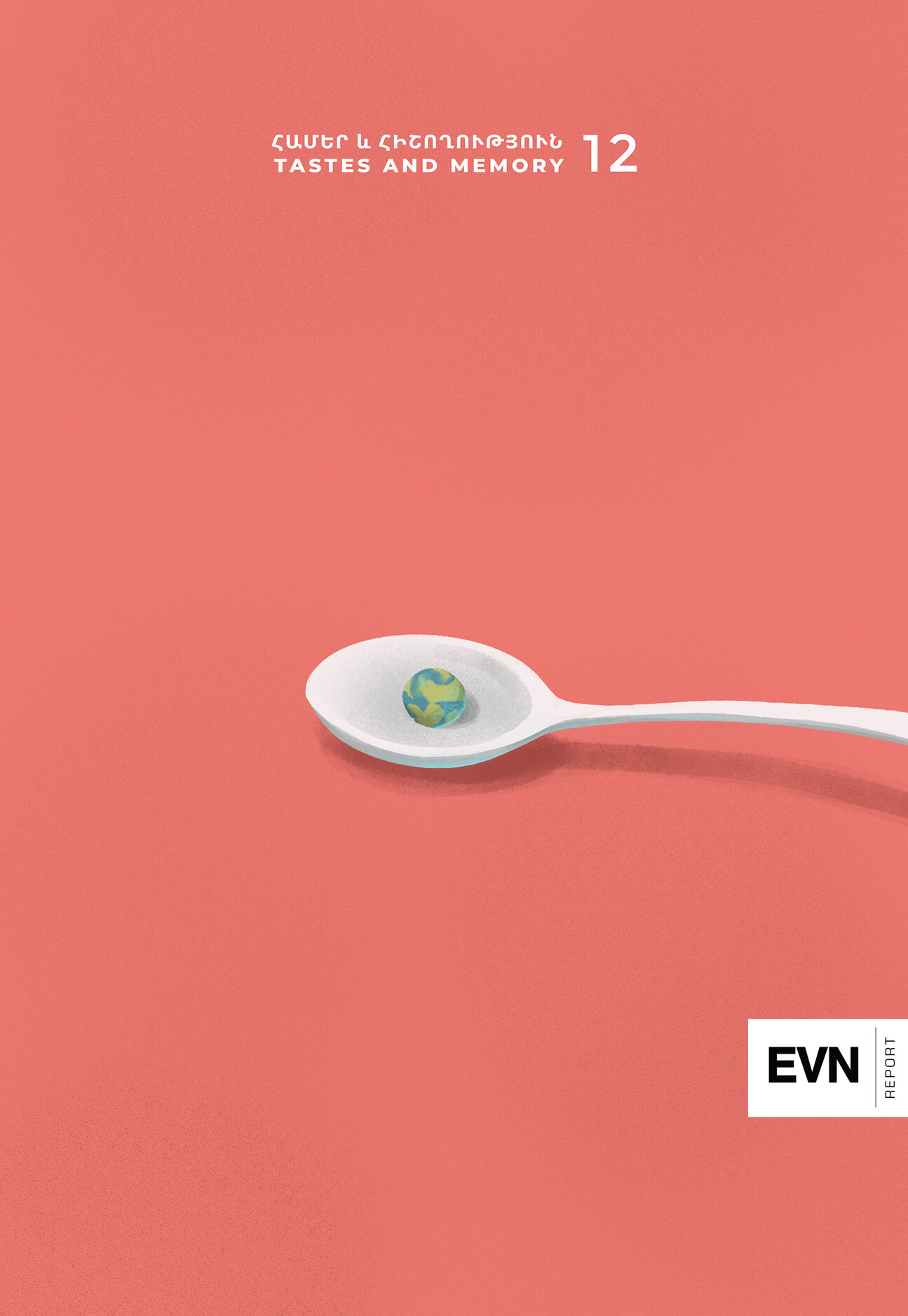
Illustration by Armine Shahbazyan.
The hero of this story is my grandfather Movses Karoian. He left behind several books, a copybook of poems, two journals but especially the recipe of “eech” or what he often referred to as “Mech,” which in his words is a “regal” meal. Making eech every time they come together is a custom for my mother and her sisters: “What should we have? Let’s have eech.”
Movses Karoyan at the age of 14, writes down the details of his journey from the Kelekian Orphanage in Dortyol (Zork-Marzpan in Armenian) to his family home in Kerk-Khan, a village in the city of Beylan.
The Kelekian Orphanage, located northeast of the gulf of Iskenderun (Alexandretta), at the foot of the Amanos mountains, was founded after the 1909 Adana massacres of the Armenians by AGBU member Tigran Khan Kelekian (1868-1951). The orphanage reopened in 1919 to house hundreds of new orphans.

Movses Karoian (sitting, left) with his scout friends at the Dortyol orphanage.
Around Easter, Movses Karoian asks the director of the orphanage, Hovhanness Aharonian, permission to set out on a lone journey to visit Beylan, his birthplace. He somehow gets to his native village Kerk-Khan. He looks for familiar faces, he wants to find the village baker, but no one is to be found. “Then I head towards our home. All of a sudden, before the last five-six steps, my sister appears and starts shouting, ‘Abou, it is my brother!’ She takes me by the hand and leads me to a house made of branches and fortified by mud. A while later she makes “Mech” with grape leaves. And it is a regal meal. She keeps saying, ‘Eat boy, this is Mech, you don’t get to eat much, eat, eat.’” The conditions at the orphanage must not have been that brilliant if a modest meal like eech is considered regal.
Twenty years later, the Armenian population of Cilicia, during the Genocide, is uprooted from their homes. In a copybook no larger than a matchbox, next to calculations, important dates and some notes, Movses writes, “July 18, 1939, at 2 in the afternoon we left Kerk-Khan leaving all our belongings to the Turkish government.”
Movses, with his three daughters, heads towards Aleppo, then Zahle, then Beirut. Two more daughters are born into the family. The untimely death of his wife leaves the burden of caring for the family, especially the responsibility of feeding the family, on Movses’ shoulders. The eech with tahini, which he had learned to make from his sister, becomes a staple thanks to four features – fast, easy, filling and tasty.
My mother says that if you were to ask for the recipe, here is how it is made from beginning to end:
– Place two cups of dark and fine bulgur in a bowl and soak it with chopped tomatoes.
– Finely chop an onion, add it to the bulgur and tomatoes, add salt and let the bulgur soften.
– Squeeze two lemons and add the juice, spread half a cup of tahini on the mix.
– Add water as needed to loosen up the mix if necessary.
– If you want, add spicy pepper paste and a spoonful of tomato paste.
– Add chopped parsley, mix well and enjoy.
Eech with tahini is eaten with lettuce leaves.
People are often surprised that you can also have eech with tahini because the version with oil is better known and you can find that one in restaurants.
My mother, who is a tireless advocate of tahinov eech, also gives out the recipe for eech made with oil, although with hesitation.
Fine, if you insist, here it is:
– Put a bit of oil in a pan
– Add a generous portion of chopped tomatoes and onions, wait for the tomato to cook a bit.
– Add two cups of bulgur
– Let it sit a bit then add lemon juice, pepper or tomato paste and olive oil
– Garnish with chopped parsley
– Mix well and serve
We make eech for ourselves and for our guests and it never tastes as good as it is unless I tell the story of my grandfather making his way home from the orphanage, finding his sister and having this regal meal. It is true, that there is usually a moment of heavy silence afterwards but it does not last long because soon enough the eech with its taste and smell quickly changes the atmosphere…
Tastes and Memory
Magazine Issue N12

Food is a repository of our most cherished memories. It connects us through time and space and memory unlocking the keys to our heritage. It carries us back to our childhood. To large family dinners, of tables overflowing at Christmas, Easter, birthdays. It binds us to the lands that we are no longer the masters of. Recipes carried across cities and deserts and continents, handed down from one generation to another are vessels of a family’s traditions and customs even when they are altered, adapted and molded to new realities. This month’s issue entitled “Tastes and Memory” is not simply about food or recipes, it’s about identity and the stories that are woven into the fabric of our collective memory.

